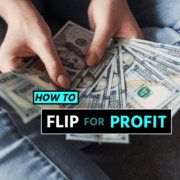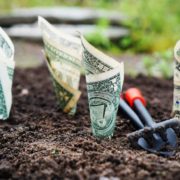What Is ARV? (And How Does It Impact Real Estate Deals?)
How does value-add property investing work? And what is ARV?
After-repair value (or ARV) is one of the biggest concepts used in real estate investing.
Let’s talk about what ARV is and how to calculate it.
Value-Add Real Estate Investing
The type of real estate investing we specialize in involves value-add properties.
This means you buy properties at a lower price, change them in some way, then sell for more. This could look like:
- Splitting up a rental into multiple units
- Adding a bedroom
- Doing needed repairs and renovations
- Etc.
The property’s value at the end of your project will be more than the price you originally bought it for.
That higher ending value is referred to as the after-repair value. This value is decided by either: 1) what it can sell for on the open market, or 2) what it will appraise for (if you’re going to hold the unit as a rental).
How to Estimate ARV
All of the financials of a value-add real estate investment are dependent on the ARV. How do we decide the ARV number? Well, it’s really just an educated guess. Let’s go over some of the key factors used in estimating an after-repair value.
The Amount of Work and Quality of Work
The work you put into a property is what adds the value. So, how you’re changing the property is a good indicator of the ARV.
For example, adding a bedroom or granite countertops will impact the future value more than just a fresh coat of paint.
However, the planned work can’t be the only thing ARV is based on. After all, you can’t guarantee the quality of work will really turn out to be worth it. So there’s another important factor in estimating ARV.
Comparing to Similar Properties
To make our estimate slightly more accurate, we’re going to look at properties that are just like yours but finished. Here are the criteria you’ll use to calculate ARV with comps:
- The same subdivision. Comp properties, at most, should be within a half mile of your property.
- The same size. What’s the square footage? Don’t compare a 1,200-square foot place to a 2,000-square foot place.
- The same condition. What will your property look like when it’s finished? Look at other properties that already look like that.
- Sold within the last 3-6 months. It’s not accurate to use the list price for a property that hasn’t sold yet. You can only guarantee the actual value of a property when it’s been purchased in your market.
- Sold without concessions. Concessions mean the seller is helping the buyer purchase the property. Some sellers will contribute anywhere between 3% and 6% of the sale price to help the buyer cover closing costs (especially in a FHA or VA market). This is important to watch out for in comps, because if a house sold for $200k with a 5% seller concession, then the seller was really only able to sell if for $190k.
Market Conditions
We usually have a ballpark idea of what the market will look like in the next 6 or so months. This is important to factor into your ARV.
For example, 2022 saw a market decline after May. So, if you were comping out a property in June of 2022, you’re expecting the market to get worse, so you factor that in. Maybe you take another 5-10% off the ARV you calculated based on comps to set a realistic expectation for the future market.
Why Is ARV So Important?
When you’re calculating the ARV of the property, remember to be truthful with yourself. Work with comps to get a full picture of your actual after-repair value. Fudging these numbers only hurts you.
ARV has a direct impact on the amount you can get from a lender. Accurate after-repair value is important to your investing financials. You can read about how ARV affects LTV here.
You can also use this free tool to calculate your lendable amount on a property based on ARV.
As always, reach out to Info@HardMoneyMike.com with any questions.
Happy Investing.












Leave a Reply
Want to join the discussion?Feel free to contribute!